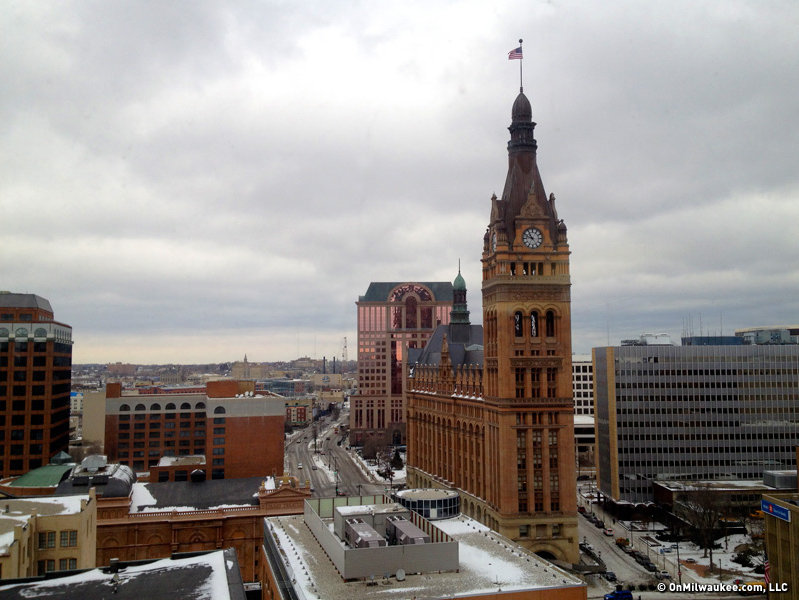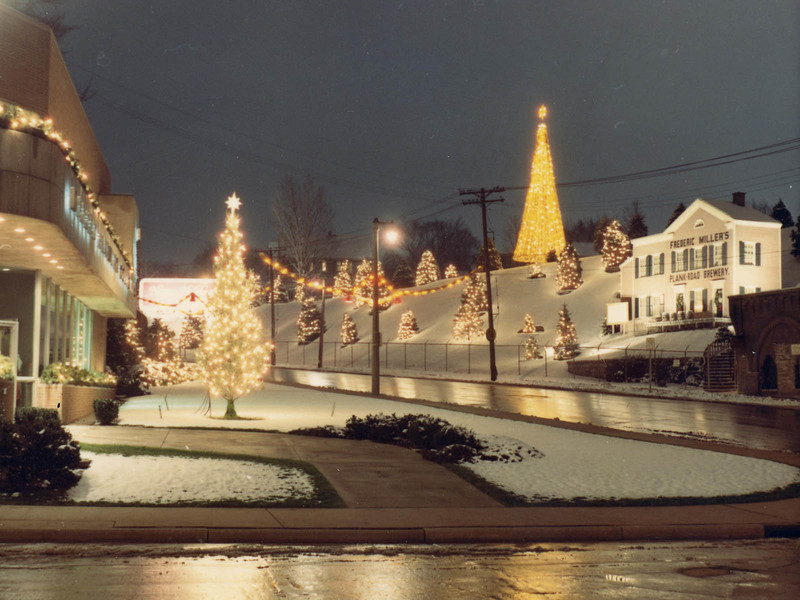If you think getting things done in city government is challenge these days, then I suggest you read Milwaukee historian Dennis Pajot’s most recent book.
His engrossing "Building Milwaukee City Hall" isn’t subtitled, "The Political, Legal and Construction Battles" – published in paperback by McFarland & Co. – for nothing.
Though we adore the iconic Milwaukee City Hall now as an immediate identifier of the city and as one of the most beautiful city halls in the country, there was controversy in every step of the process.
From the site, to the funding, to the architect, to the plan, to the execution of the plan – literally every step of the way – there were dramas, controversies, battles and legal wrangling.
Though Pajot’s two previous books focused on the early days of Milwaukee baseball, he’s not a newcomer to other aspects of Milwaukee history. We caught up with him to ask him about what led him to trace the story of how architect Henry Koch’s design for City Hall ended up getting built, what he learned in writing the book and what’s next on his plate.
OnMilwaukee.com: How did you end up digging up the story of City Hall?
DP: I have long been interested in old Milwaukee buildings. A number of years ago I wrote a history of First Methodist Church in Milwaukee, which was published in "Flashbacks," the official newsletter of the United Methodist Historical Society of Wisconsin. At about that same time I put together a presentation and short history of the churches on the near South Side of Milwaukee.
During this research I frequently ran across newspaper articles relating to the City Hall controversy, which I found interesting. Obviously, while doing research on 19th century baseball I also ran across articles on the City Hall matters. Looking through libraries and other sources, it appeared the early story of City Hall had never been told in detail, so I decided to take it up.
OMC: I was intrigued by the siting discussions, to think how the city would have looked today if City Hall had been built on one of the alternative sites discussed.
DP: I think it obvious Milwaukee would have evolved much different, especially if the area on the South Side had been selected as the site. With the hub of city government at 1st and Florida, that area would have certainly developed much differently than it did.
One question which can never be answered, is if the City Hall would have been built on the South Side, how long would it have lasted there? My guess is eventually it would have been necessary to move the city government back into the Downtown area, and a new City Hall would have been built.
OMC: The building now is such an iconic Milwaukee image, yet it almost never happened, right? Can you talk a bit about the design that almost won and why Koch's ended up getting built?
DP: I think it was all politics. By most accounts Henry Ives Cobb's was the best design. But being from Chicago, he was not favored here. It must be remembered that Chicago had recently been given the National Democratic Convention and most in Milwaukee thought Chicago had "stolen" it from Milwaukee. While researching the story, I got the feeling that Cobb never really had a chance to win the competition.
Henry Koch was a favorite in Milwaukee, his schools and public buildings were scattered around town for all to see. By the way, Koch's design is my favorite, but that could be because I can't imagine any other building there.
OMC: A lot of folks were skeptical of the building's design, it seems, saying it would never become iconic, but it did. Why do you think that is?
DP: I think Koch's design was perfect for the view from East Wisconsin Avenue. Even today, as you walk north on North Water Street from Michigan or Wisconsin Avenue, City Hall's tower stands out, even though partially obstructed at spots.
That the land the City Hall stands on was odd shaped certainly was important to this design. If the lot had been rectangle and larger, the designs perhaps would looked less "iconic" to later eyes.
OMC: There was a lot of politics that went into the discussion of whether to build, where to build, how much to spend, and on and on. Are there lessons for us now in all this back and forth?
DP: The most important lesson is getting it right. Despite themselves, the City of Milwaukee politicians got it right. Not doing things on the cheap no doubt saved a lot of expenses over the years. If the building had been built with cheaper material and extreme cost cutting methods, I do not see how it could have lasted as long as it has.
OMC: I noticed you stopped just before all the issues of the most recent renovation. Why did you decide not to bring the story right up to today?
DP: The book was being written while many of these issues were still unresolved. I am sure some still have to be resolved. The book's focus was on its early history, and I wanted it to stay clear of its most recent – and I certainly hope, not its last – controversial chapter.
OMC: Are you working on any other Milwaukee-related book projects these days?
DP: I am actually back on baseball. My master plan is to write the detailed history of the Milwaukee Brewers from 1902 until 1919, the time known as the deadball era in baseball. I have currently finished work on a number of these manuscripts. Those of 1904 through 1908, and 1911 through 1916 are finished and have been donated to the Milwaukee Public Library. These are – or soon will be – available to read in the local history department.
Non-baseball wise, I have a number of pages of notes related to the controversy over the building of the Milwaukee Public Library and Museum in the 1890s. If I continue further with these notes depends on a number of things – time being one I am always fighting against.
Born in Brooklyn, N.Y., where he lived until he was 17, Bobby received his BA-Mass Communications from UWM in 1989 and has lived in Walker's Point, Bay View, Enderis Park, South Milwaukee and on the East Side.
He has published three non-fiction books in Italy – including one about an event in Milwaukee history, which was published in the U.S. in autumn 2010. Four more books, all about Milwaukee, have been published by The History Press.
With his most recent band, The Yell Leaders, Bobby released four LPs and had a songs featured in episodes of TV's "Party of Five" and "Dawson's Creek," and films in Japan, South America and the U.S. The Yell Leaders were named the best unsigned band in their region by VH-1 as part of its Rock Across America 1998 Tour. Most recently, the band contributed tracks to a UK vinyl/CD tribute to the Redskins and collaborated on a track with Italian novelist Enrico Remmert.
He's produced three installments of the "OMCD" series of local music compilations for OnMilwaukee.com and in 2007 produced a CD of Italian music and poetry.
In 2005, he was awarded the City of Asti's (Italy) Journalism Prize for his work focusing on that area. He has also won awards from the Milwaukee Press Club.
He has be heard on 88Nine Radio Milwaukee talking about his "Urban Spelunking" series of stories, in that station's most popular podcast.







